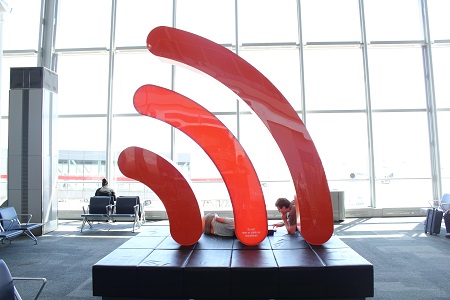By Trevor Owens
Senior Program Officer, IMLS Office of Library Services

IMLS recently announced 41 awards made through the National Leadership Grants for Libraries program (NLG), the Laura Bush 21st Century Librarian program (LB21), and Sparks! Ignition Grants for Libraries program (Sparks). Among these awards, we are pleased to support several projects that further expand equitable access to the digital information which is increasingly essential to participation in all aspects of society. The three projects highlighted in this post represent an investment of over $300,000. Click the log number for each grant to access more information, including selected documents from each grant proposal.
The content and services provided through the national digital platform for libraries and museums are only useful to those who have reliable and robust connectivity to the web. As such, connectivity is a critical equity issue in which libraries have been leaders for a long time. We are thrilled to support projects where libraries around the country are further expanding their leadership roles to more equitably provide digital access in communities across the country. A significant portion of the grants announced earlier this year focused on expansive approaches to digital access and this new batch of grants includes three new awards that further round out this part of the portfolio.
TV Whitespace and Digital Inclusion
A $249,998 NLG project grant to San Jose State University’s School of Information will support “Libraries Leading in Digital Inclusion and Disaster Response via TV White Space Wireless Connections.” (LG-70-16-0114-16) This project will help libraries explore dramatically expanding internet access beyond the walls of the library by using TV White Space (TVWS), a low-cost wireless technology. The project will pilot this technology in a series of different public libraries as a method to provide basic wireless access to areas around libraries and as a connectivity backup mode for communities to use during disasters.
Community-Based Mesh Networks and Fellowships for Young People
Through a $50,000 NLG planning grant (LG-72-16-0130-16), Brooklyn Public Library (BPL) will pilot BKLYN Link, a community-driven mesh network that will provide free broadband access and a technology-based fellowship program for young adults, ages 18-24. A mesh network is a wireless network that uses radio nodes, laptops, cell phones, and other wireless devices to provide reliable access to the Internet. BPL will conduct community asset mapping in three low-income Brooklyn neighborhoods to identify which community is best positioned to host a mesh network, plan the technical structure of the network, develop user policies and procedures, and create a “playbook” of strategies and tools for deepening community engagement and launching a mesh network. The project team will also design a technology-based youth fellowship program to teach young adults how to install and maintain the mesh network and pilot a five-month abbreviated version of the fellowship.
Lending Internet Access to Low Income Community College Students
To work toward resolving issues of Internet and computer access for low-income students, the Springfield Technical Community College Library will launch the STCC to Go program through a $14,935 Sparks grant (SP-02-16-0004-16). The library will pilot lending Chromebooks and mobile Internet hotspots to students. These units will circulate for a limited time period among students, allowing them access to both the equipment and the internet connection necessary to conduct research, complete assignments, and take exams wherever and whenever needed. Many public libraries have explored lending hotspots; an award to University of Texas at Austin from the last LB21 grant cycle studies these projects in rural public libraries (RE-31-16-0004-16). This new project will explore how these models can be adapted to community college settings.
Together these three projects illustrate the creative and exciting ways that diverse kinds of libraries are rising to the challenge of providing equitable digital access and connectivity.